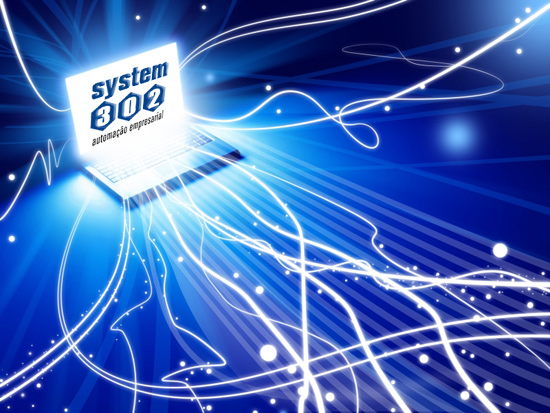
Smart Systems, guaranteed results

The need for automation in the industry and its most varied segments is greatly associated, among other aspects, to the possibility of agilizing the information process, since the operations are increasingly more complex and variable. A great number of regulation controls and mechanisms are being required to allow faster decision making and hence improve the level of productivity and efficiency on the industrial process aiming at reaching operational excellence.
Automation enables saving energy, work force and raw materials, better product quality control, more plant availability, and increases productivity and operational security. In fact, automation enables increased levels of process continuity and global control with more efficiency, approximating real production figures to the plant nominal capacity by reducing to a minimum idle hour, corrective maintenance and the lack of raw material.
Furthermore, with the advent of automation systems based on field networks and digital technology, many benefits arise in terms of maintenance and increase operational availability and safety. Also, automation goes beyond the plant floor limits, to continue with the finished product, reaching a wider range: the automation of business itself.
The complete solution must provide a management methodology in a transparent manner and ensure that all the efforts are being geared towards reaching the goal set, facilitating decision making where there are relevant changes concerning the performance of the indicators, or a planning detour.
Users and clients therefore should be alert when choosing and defining an automation and control system. They must take into account a wide range of criteria including synchronism with technology advances.
The better the information, the better a plant can be operated and generate more products and profits. Digital information and truly open systems allow the most diverse types of information to be collected for a plant´s most diversified goals. In this sense, in a brand new and never imagined way, the Fieldbus technology (Foundation fieldbus, PROFIBUS, HART, DeviceNet, Asi, etc.), will turn precious bits and bytes into a lucrative drive, while gaining quality in the process as a whole. Today it´s not enough to think only about fieldbus, one must pay attention to the general benefits an automation and control system can provide. SMAR´s automation system SYSTEM302-7 is a truly open system that provides a wide range of benefits to users and plants.
Nowadays many providers claim their systems are open, which is not proved in practice. These systems are only partly digital, while being in fact proprietary. An open system cannot be described as such only for using a digital field bus.
A truly open system has wider scope. Possibility of diagnostics, more tolerance to failures, instantiable function blocks, Flexible (FFB) blocks, connectivity to the Fieldbus technology, HSE (High Speed Ethernet) connectivity, OPC connectivity, and many other features that make it a complete control system and not a mere communication bus with proprietary integrations. When acquiring a control system one should be alert so that all these functions can aggregate information inducive to more beneficial decision making that ensures operational excellence.
In a truly open system, several open-technology softwares are integrated to the hardware and may integrate with software and hardware from other manufacturers, as communication drivers and the so-called “dedicated files” belong to the past. The User must be free to choose the components and even build his own system. Existing old proprietary technologies may not be available when your company needs to undergo an expansion.
The flexibility and expanding capacity of a truly open system make possible to meet new configurations and expansions requirements without large reinvestments. Before deciding on what technology will be used on new projects, make sure that future modifications will not need to go beyond your budget. Modern technologies offer faster response to the changing market conditions, when increasing capacity, changing to a different product or adapting to some new requirement.
See some SYSTEM302-7 advantages:
- Flexibility to alter configurations to meet new demands;
- Distribution of critical functions like field control;
- More information, other than process ones, to manage instrumentation and process and integrate business;
- Economical architecture with less initial, operational and maintenance costs;
- Interoperability among several manufacturers with more possibility of choice and spare parts savings;
- Totally digital and multiple protocol connectivity;
- Possibility of expansion at reduced costs, scalable architecture;
- Redundancy at various levels, more availability and security;
- Easier learning;
- Easier operation, simple engineering, multi-user environment;
- Remote operation;
- Integrated operation, maintenance and engineering through the entire process, based on standard protocols, monitored from the Central Control Room;
- Complete process view by intuitive graphic interfaces;
- Asset Management based on the web, EDDL, FDT/DTM and MES.
Undoubtedly Truly Open Systems and Asset Management are important tools for a company´s strategic management. They provide operational reliability and align production, maintenance and managing teams for synergistic achievement of goals, which are productivity increase, quality improvement and cost reduction required by any business segment. In addition, they are the better option in terms of return on investment. For all of this, be conscious when defining your automation and control system.
To invest in a truly open system is to ensure operational excellence for the next two decades or more. See more details on an open control system at: http://www.system302.comLatest news
-
Nova Smar holds PATS in Pindamonhangaba/SP
-
Basic instrumentation training for new employees
-
Nova Smar takes part in Meorga Frankfurt 2024
-
Nova Smar took part in the 28th ARC in Orlando
-
Revide magazine mentions Nova Smar in article on Sertãozinho
-
Training at Zilor Plant - Macatuba unit
-
Flow computer upgrade
-
Training at the Zilor Plant Quatá
-
Training at Dacalda Sugar and Alcohol
-
System302 CPU800 training







